Manage Care

Best Practices for Reducing Patient No-Shows Tip Sheet
Medical practices have an average of a 5 to 7 percent no-show rate, according to the Medical Group Management Association (MGMA)1. These missed appointments are costly for clinics. Clinics may not be able to eliminate no-shows, but there are ways to reduce no-shows and the negative Impact on clinics.
The longer appointments are scheduled out and patients have to wait to be seen are more likely to find care from another provider, Emergency Department or an Urgent Care Center. In these cases, many patients do not call to cancel future appointments or no-show because they have been seen somewhere else. See the Alliance’s Member Satisfaction Tool Kit for more information on timely access to care for routine and urgent appointments.
This allows for availability of walk-ins and appointments for urgent/acute appointments (i.e. ear infection or strep throat).
Emphasize the importance of the patient coming to their scheduled appointments. An Example (when speaking to the patient on the phone):
“John, I have scheduled your appointment for (insert date) at (insert time) with (provider name) at our (clinic location). As a reminder, it is important that you attend your appointment. If you need to reschedule or cancel your appointment, please call us at (insert phone number). This will allow us to schedule a patient in need to be seen.”
Reminding your patients ahead of time of their appointment (via phone, email, and/or text) will give them an opportunity to confirm or reschedule their appointment in a timely manner.
Assign a staff member to remind patients of their appointments 48 hours before and same-day. Consider using an automated appointment reminder service for your clinic.
If you have unconfirmed appointments, call those patients the day of to confirm. This allows for you to open your schedule for another patient to be seen. See the Member Satisfaction Tool Kit for additional tips on pre-visit planning.
If a patient has a history of no-shows, double book their appointment to allow another patient to be seen during this time if they do not arrive for their appointment. If the patient with the history of no-shows arrives for their appointment, have them be seen by another member of the care team or be triaged by a nurse if they cannot see their provider.
“Tetrising” the schedule is moving around appointments as patients arrive to ensure all patients are seen. The art of “tetrising” is looking at the schedule and taking appropriate action in real time. Have the scheduling coordinators move appointments across the schedules(s), to allow for missed opportunities to be caught on time and increase patient access.
For example, your 10:15 a.m. appointment arrives 15 minutes early and if the 10:00 a.m. patient arrives late, allow the 10:15 a.m. patient to be seen first. The late patient will now be seen at the 10:15 a.m. slot.
Partner with patients to find out why they no-show to their appointments and to assist in preventing future no-shows. For example:
- Refer patients that have transportation challenges to the Alliance’s Transportation Coordinator at 1-800-700-3874 ext. 5577; this service is not covered for non-medical locations or appointments that are not medically necessary.
- Route after hour’s calls for Alliance members to the Alliance’s Nurse Advice Line: 1 (844) 971-8907.
- Make a note in the schedule if a patient requires an extra reminder call.
- Call the patient right away to check-in (you can ask if they are running late) and reschedule them.
Did you know that you can report when an Alliance member no-shows at your practice? One of our Member Services Representatives can follow up with our members. You can submit this form via our Provider Portal.
Contact us | Toll free: 800-700-3874

